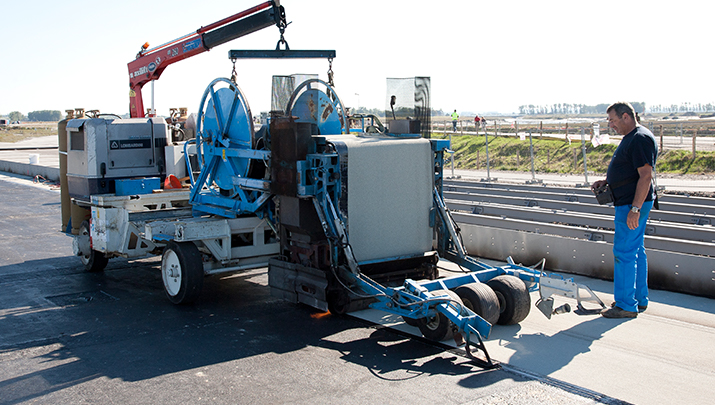Securing a path to history
More than 2.5 million visitors flock to a small, rocky island off the coast of Normandy in Northern France every year. Best known for the gothic style Benedictine Abbey of Saint Michel completed in the 16th Century, the World Heritage Site of Mont Saint-Michel is one of France’s top five tourist attractions. Historically it was only accessible by a 135 year-old causeway, which deteriorated from years of environmental erosion. A build-up of silt around the area prevented the river’s ability to flow freely around the island. In order to preserve the centuries-old site, a new solution for allowing visitors to move freely from the mainland to the island had to be devised.
A new bridge designed by architect Dietmar Feichtinger spanning 2,500 feet was constructed, replacing the dilapidated causeway. Designed by architect Dietmar Feichtinger, the new bridge directs all vehicles to the mainland and allows only pedestrian traffic or dedicated shuttles to traverse its length. The structure also alleviates a number of environmental problems its predecessor perpetuated, chief among them the buildup of silt around the island. “It is a minimal work in its expression, but ambitious in its design and performance,” the architect describes. “It uses high-performance techniques to work without ostentation with the challenges of the given conditions.” With water able to flow freely above and below, tidal ebbs and flows are now able to push the silt out to sea, clearing out the buildup to truly make Mont Saint-Michel an island again.

Built on stilts measuring 12 meters tall, the new bridge can safely weather the harsh maritime conditions. The region experiences some of the most significant tidal movements in Europe throughout the year, often leaving the area completely uncovered during low tide. But during high tide, waters can reach as high as 16 meters above sea level. The low profile structure is designed to intentionally flood as waters rise, but rising waters meant the bridge needed unique, lasting waterproofing protection that would allow visitors uninterrupted access to the landmark. The engineering team reached out to Siplast, the only manufacturer to have an eco-friendly, solvent-free solution that met the criteria.
Even the tourists who skirted the bridge through the old passage stopped to watch and photograph the machine in action.
The site’s unpredictable nature required a solution for applying the waterproofing membrane quickly, in the event that high tides decided to interfere with the application. Weather conditions during application cooperated, and Siplast’s Jet Pont II product performed speedily, covering 6,000 square meters of the bridge with high-performance Parafor Ponts in only four days. The team applied the solvent-free liquid Paracoating Deck to the bridge upstands and details, fortifying the entire structure. With innovative solutions unlike any on the market and an application mechanism at its disposal, the Siplast team played a key role in the construction and longevity of an important structure designed to endure Mother Nature and transport visitors back to one of France’s most historic sites for many years to come.